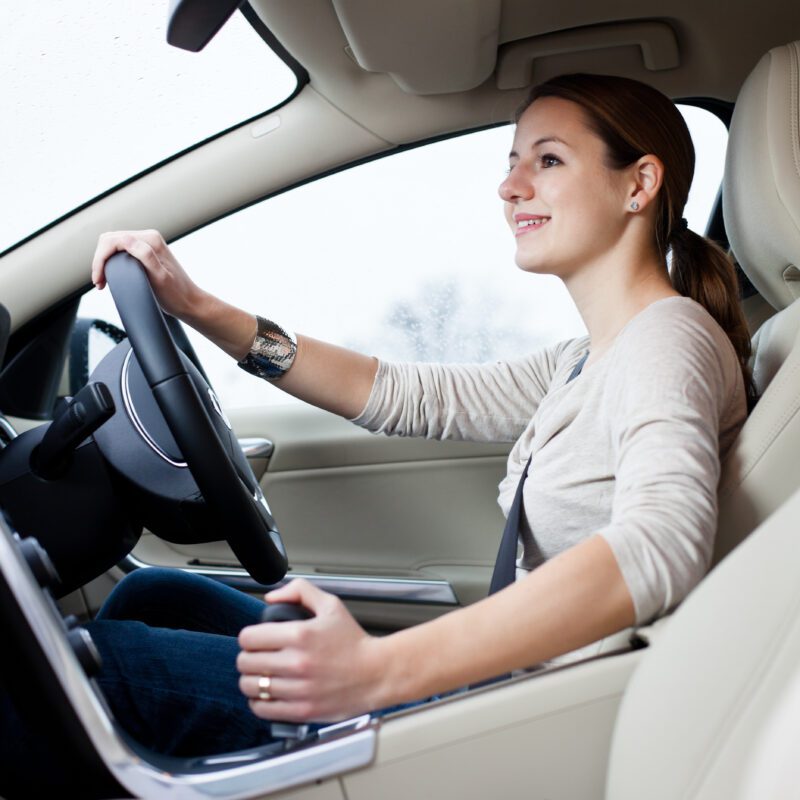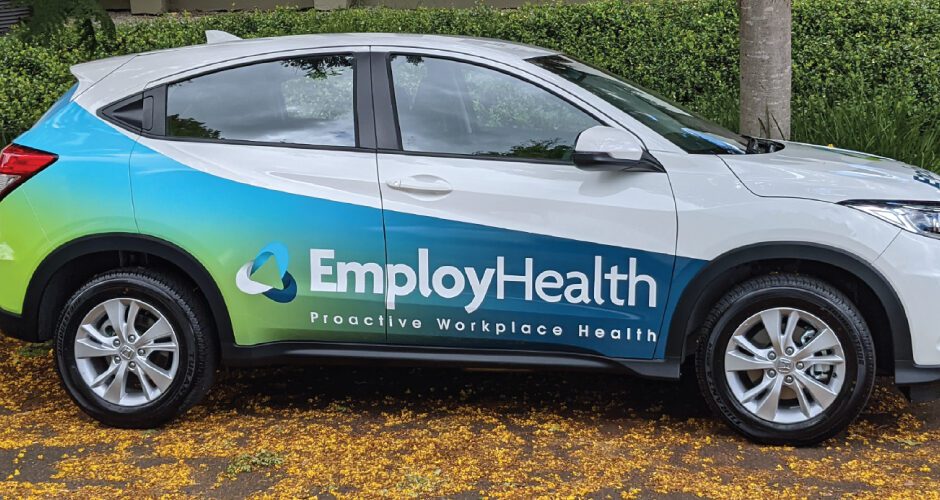It can in fact be argued that it is of more importance, as a worker on the road faces many more high risk situations that can lead to serious injury, many of which could be avoided by simple safety and positional education to optimise the use of their vehicle.
Workers in a vehicle need education on optimal seat position, sun care, use of mobile devices and fatigue to assist in their everyday work demands.
What Is Vehicle & Driving Ergonomics?
An education on vehicle and driving ergonomics will provide your workers with the information and knowledge to understand why they get pain when sitting incorrectly for extended periods of time and how to eliminate this issue. They will also be educated on the other environmental risks that include fatigue management and sun protection.
Common Driver Injuries
When travelling long distances with no break the human body will begin to experience dull constant aching in several areas as the body generally requires movement to function at its optimal level. Without movement muscles and other structures in the body will begin to tighten or turn off, adding stress to other structures of the body resulting in pain.
Knee Pain After Driving
Knee pain can occur in long distance drives when the joint’s anatomical position is placed in an awkward position and the pressure of this position builds until it starts to cause pain. Knee pain can also occur in journeys that result in constant stopping and starting for extended or repetitive occurrences. In this instant pressure can build in the knee cap resulting in pain during and after driving a vehicle.
Neck Pain After Driving
Like sitting at a desk with poor posture creates neck pain, so does sitting with poor posture in a car seat. Ensuring that you have a good seat ergonomic setup can eliminate many of the factors that cause musculoskeletal pain while driving. These can also involve the position of mirrors and visual access to dashboards.
Back Pain After Driving
Similar to neck pain, low back and mid back pain is a result of prolonged sitting in a poor ergonomic position with poor lumbar support. In the case of low back pain prolonged poor sitting can also lead to referral of pain symptoms into the hip and lower legs if not corrected early.
Hip Pain After Driving
Hip pain can occur due to poor height of the car seat where the knees are in a higher anatomical position than the hips thereby increasing hip flexion. Pain in the hips can also be a secondary result of poor back support and posture.
Foot Pain After Driving
Foot pain is generally a result of repetitive pushing of pedals to the floor in cars particularly if these pedals are old and if the car is constantly stopping and starting in traffic. It can lead to pain in the pack of the ankle, up the back of the leg and the underside of the foot.
Key Causes Of Driving Injuries
The most common reports of pain from car drivers are generally in relation to the poor chair seat they sit on, resulting in pain in the lower back, neck and hips. Incorrect height and angle of the seat will increase the muscle tension felt in the body and this can be amplified if there is also poor lumbar support.
Car Driver Seat
The majority of pain that is felt driving cars can be traced back to the position and setup of the individual's car seat. Setting the car at optimal height and seat back angle with good lumbar support and correct distance from the steering wheel can eliminate most posture pains reported from driving.
Vehicle Vibrations
There is a lot of research that has shown constant vibration can be a cause of joint discomfort. It is therefore important to ensure that workers in vehicles with lots of vibration or bouncing have correctly fitted chairs to eliminate this risk factor.
Driver Posture
Posture is important for any body position, whether sitting or standing, and particularly if in that position for a sustained period of time. Correct posture can be stimulated and supported by correct driver ergonomics that include correct seat position and headrest settings.

Driving Ergonomics Assessment & Training
The training and education section of this service will empower your workers with the knowledge to understand how their bodies work, what causes pain and how they can act to prevent these symptoms from occurring. Education will also focus on the major factors of vehicle ergonomics that increase their comfort and operational safety while using the vehicle.
The other health factors that we discuss include battling fatigue, decreasing UV ray exposure and the physical preparation and recovery of their bodies. Fatigue is a massive concern for workers that spend large amount of time operating vehicles and we discuss:
- The effects of fatigue
- The signs and symptoms of fatigue
- Tips and tricks to avoid and manage fatigue
Electronic devices are now a major part of worker job requirements when working on the road and we discuss tips and tricks to help safely use these devices out on the road to avoid muscular stress and pain.
Importance Of Ergonomics In Vehicles
Ergonomics in the workplace have received a lot of attention in recent years as employers find ways to improve workers desk ergonomics to eliminate pain and improve productivity. Vehicle ergonomics are as important, if not more so, for workers that spend large amounts of time in their vehicles.
- Decreased pain and lost time injuries from workers with poor vehicle ergonomics
- Improved safety and alertness from workers while operating vehicles
- Happier and more productive workers with an improved workplace culture
Benefits For Your Business
Workers not in pain will always be happier and more productive and this will improve the culture of the company.
- Reduced lost time injuries or workers on suitable duties and workcover claims
- Workers not in pain are less likely to be fatigued and therefore less likely to have accidents while operating vehicles.
- Decreased insurance premiums from workcover claims, improving the business’s bottom line.
Why Employ Health?
Employ Health has been working in the occupational health space for over a decade and has accumulated more than 50 years plus experience. As trained physiotherapists we are trained in the understanding of human physiology and biomechanics which allow us to diagnose what aspects of a persons behaviour and physical exertion is the cause for their musculoskeletal symptoms. These skills have been further refined and developed with our extensive experience in the occupational field across dozens of different businesses and workers. We have delivered hundreds of movewell and ergonomic presentations, that have educated workers about their bodies and the best way they can avoid pain and injury.
- Physiotherapists trained in the physiology and anatomy of the human bodies
- Extensive experience in the industry across multiple business sectors.
- Employees undergo extensive training and practise in delivering educational material to workforces across multiple industries.
Other Ergonomic Assessments
 Workstation Ergonomic Assessments
Workstation Ergonomic Assessments
Just as we have highlighted the importance of ergonomics in vehicles, to help reduce worker pain and discomfort so is the importance of ergonomics for workers that spend their days at work at a workstation. In many cases these workers do not leave these spaces for their whole shift except for lunch and toilet breaks. It is no surprise that these workers also report postural pain and headaches and require their own educational sessions to prevent injuries.
Read more
 Task Specific Ergonomic Assessment
Task Specific Ergonomic Assessment
Ergonomic assessments can also be provided to workers in factory and production settings. Although there are generally less postural issues this demographic of the workforce have to work in awkward postures or completely highly repetitive tasks that can result in musculoskeletal injury. Assessing and reporting on these tasks with solutions for any identified risks based on the hierarchy of risk controls is another service that Employ Health can offer your company.
Read moreFrequently Asked Questions
At Employ Health we have helped employees in a multitude of vehicles ensure they are getting the best ergonomic setup. These vehicle assessments are not only for cars but we can assess trucks, buses, forklifts and other mobile place equipment.
This is dependent on the company’s needs. If they want the full presentation on movewell and vehicle assessment it is an 1.5 group presentation followed by individual vehicle settlement that can take 15-20 mins each. For pure vehicle assessments 20-30 mins per assessment allows for correct vehicle setup and brief worker education.
Yes, group presentation allows for the education of multiple workers at the same time improving the company’s return on investment.
Employ Health physiotherapists specialise in Occupational Health and workplace ergonomics and have delivered this specialised training across multiple industries and businesses with great success.
